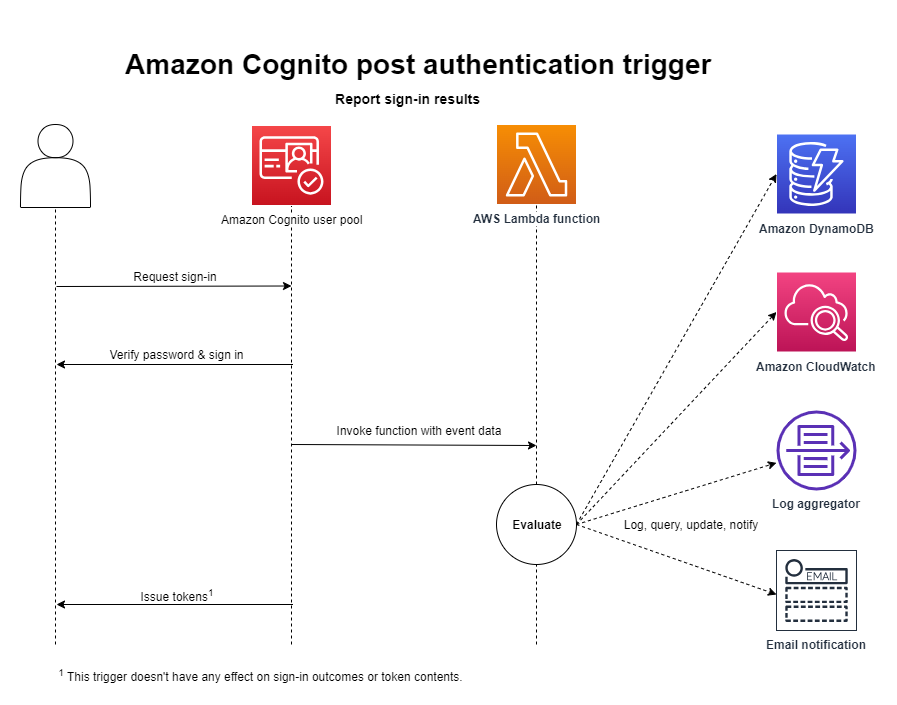Post authentication Lambda trigger
The post authentication trigger doesn't change the authentication flow for a user. Amazon Cognito invokes this Lambda after authentication is complete, before a user has received tokens. Add a post authentication trigger when you want to add custom post-processing of authentication events, for example logging or user profile adjustments that will be reflected on the next sign-in.
A post authentication Lambda that doesn't return the request body to Amazon Cognito can still cause authentication to fail to complete. For more information, see Things to know about Lambda triggers.
Topics
Authentication flow overview

For more information, see An example authentication session.
Post authentication Lambda trigger parameters
The request that Amazon Cognito passes to this Lambda function is a combination of the parameters below and the common parameters that Amazon Cognito adds to all requests.
Post authentication request parameters
- newDeviceUsed
-
This flag indicates if the user has signed in on a new device. Amazon Cognito only sets this flag if the remembered devices value of the user pool is
AlwaysorUser Opt-In. - userAttributes
-
One or more name-value pairs representing user attributes.
- clientMetadata
-
One or more key-value pairs that you can provide as custom input to the Lambda function that you specify for the post authentication trigger. To pass this data to your Lambda function, you can use the ClientMetadata parameter in the AdminRespondToAuthChallenge and RespondToAuthChallenge API actions. Amazon Cognito doesn't include data from the ClientMetadata parameter in AdminInitiateAuth and InitiateAuth API operations in the request that it passes to the post authentication function.
Post authentication response parameters
Amazon Cognito doesn't expect any additional return information in the response. Your function can use API operations to query and modify your resources, or record event metadata to an external system.
Post authentication example
This post authentication sample Lambda function sends data from a successful sign-in to CloudWatch Logs.
Amazon Cognito passes event information to your Lambda function. The function then returns the same event object to Amazon Cognito, with any changes in the response. In the Lambda console, you can set up a test event with data that is relevant to your Lambda trigger. The following is a test event for this code sample: